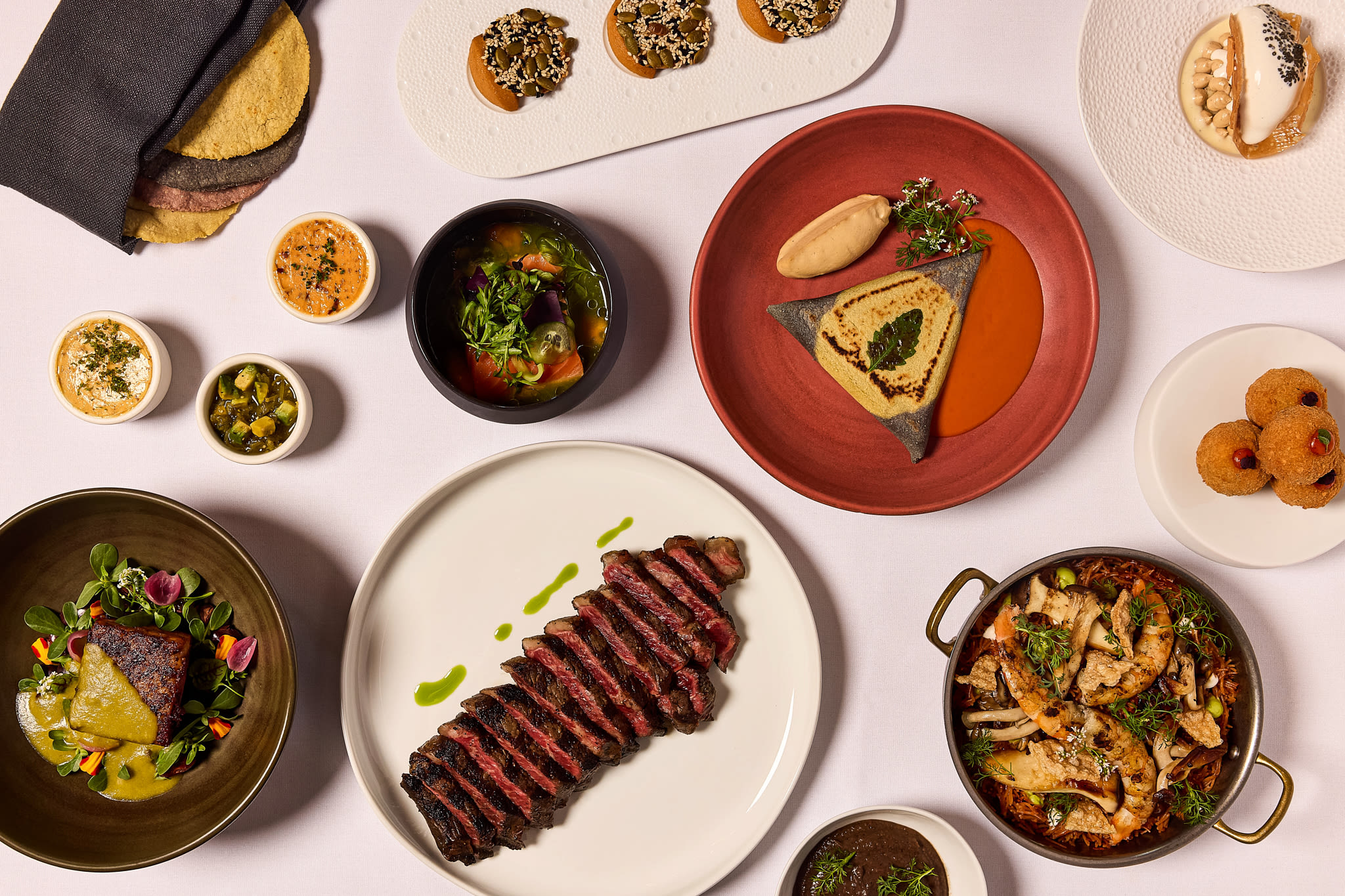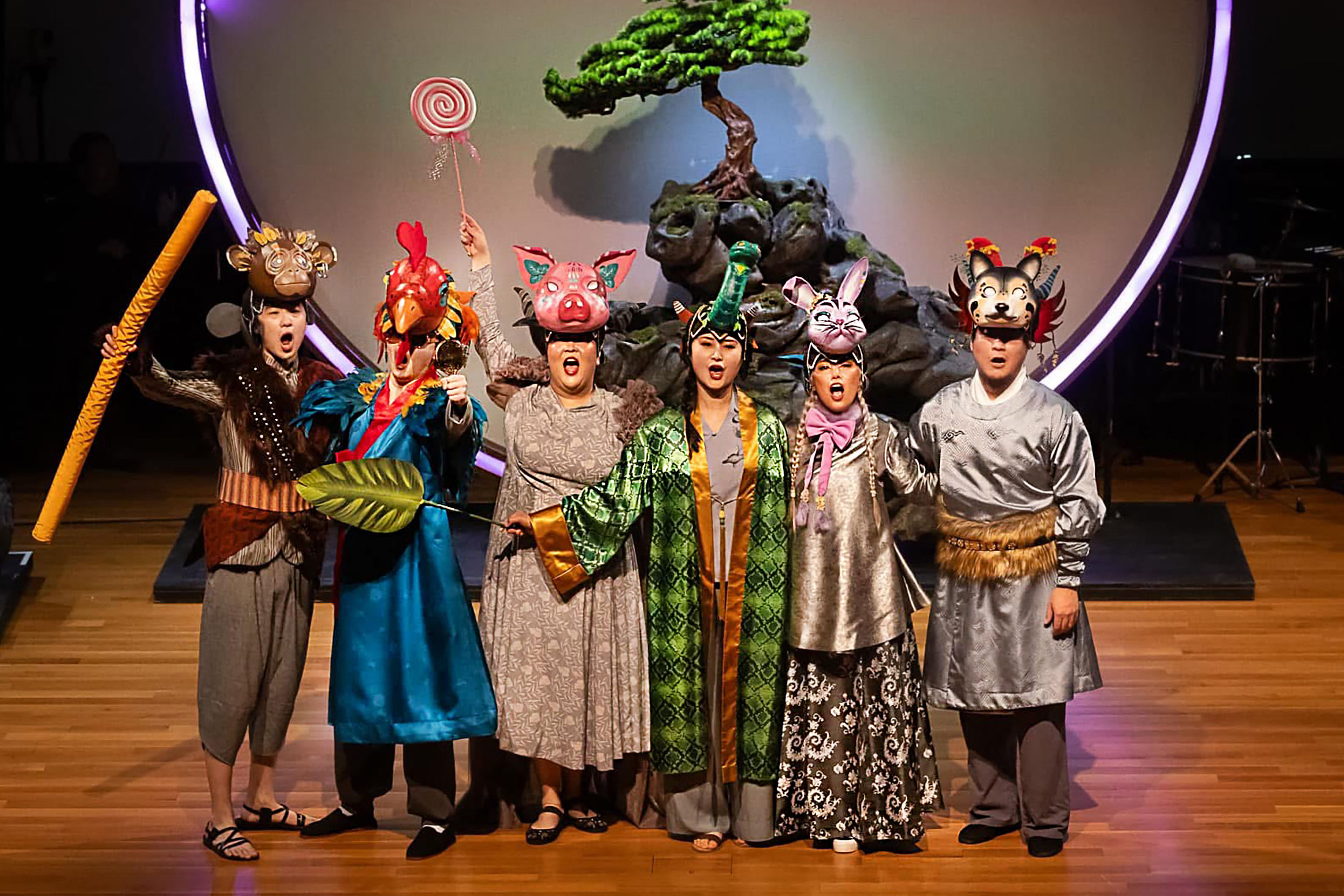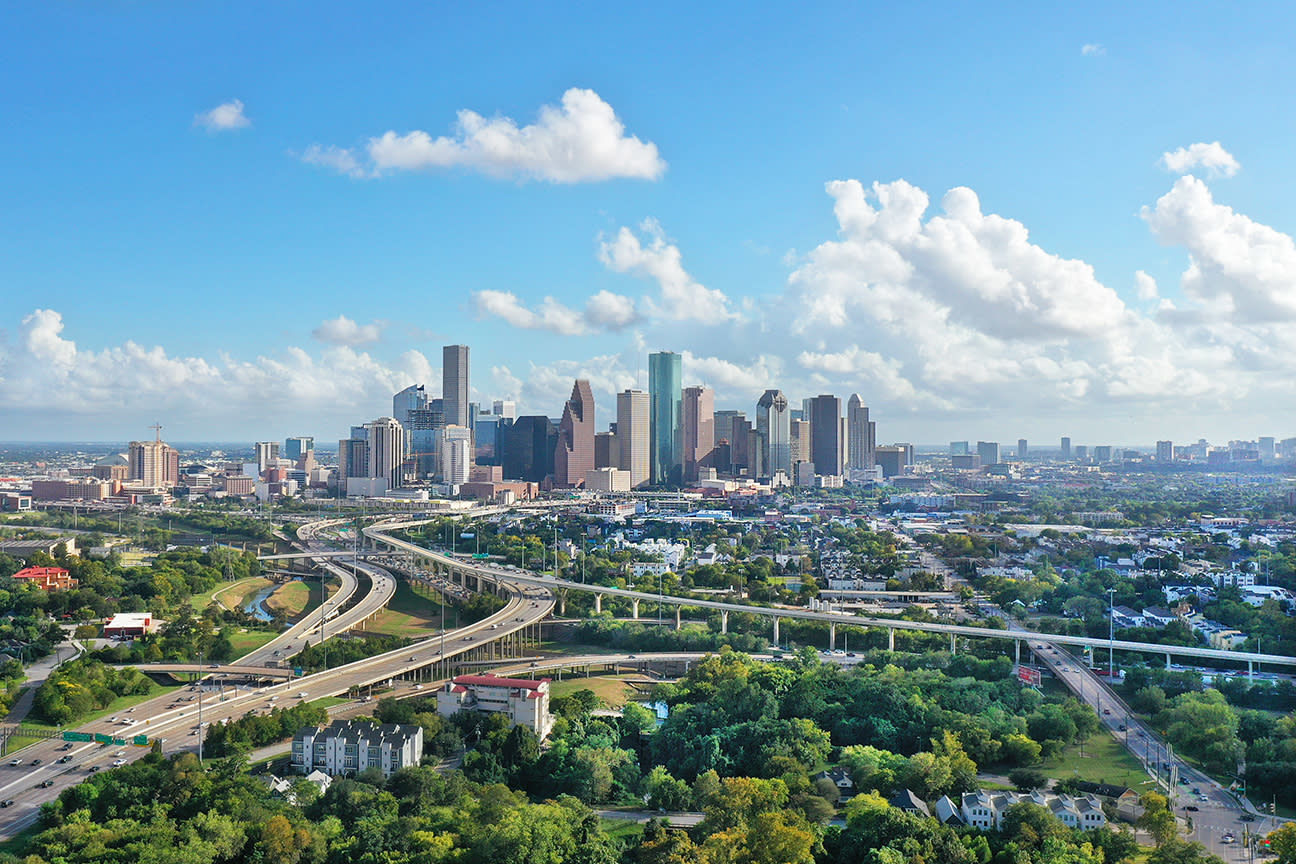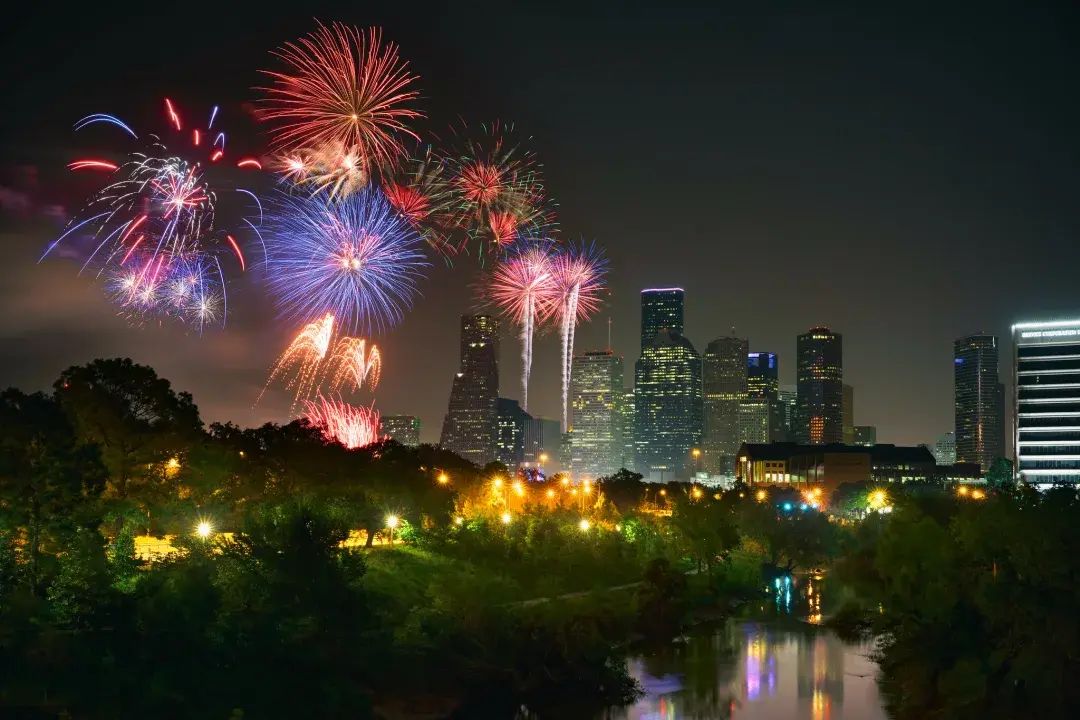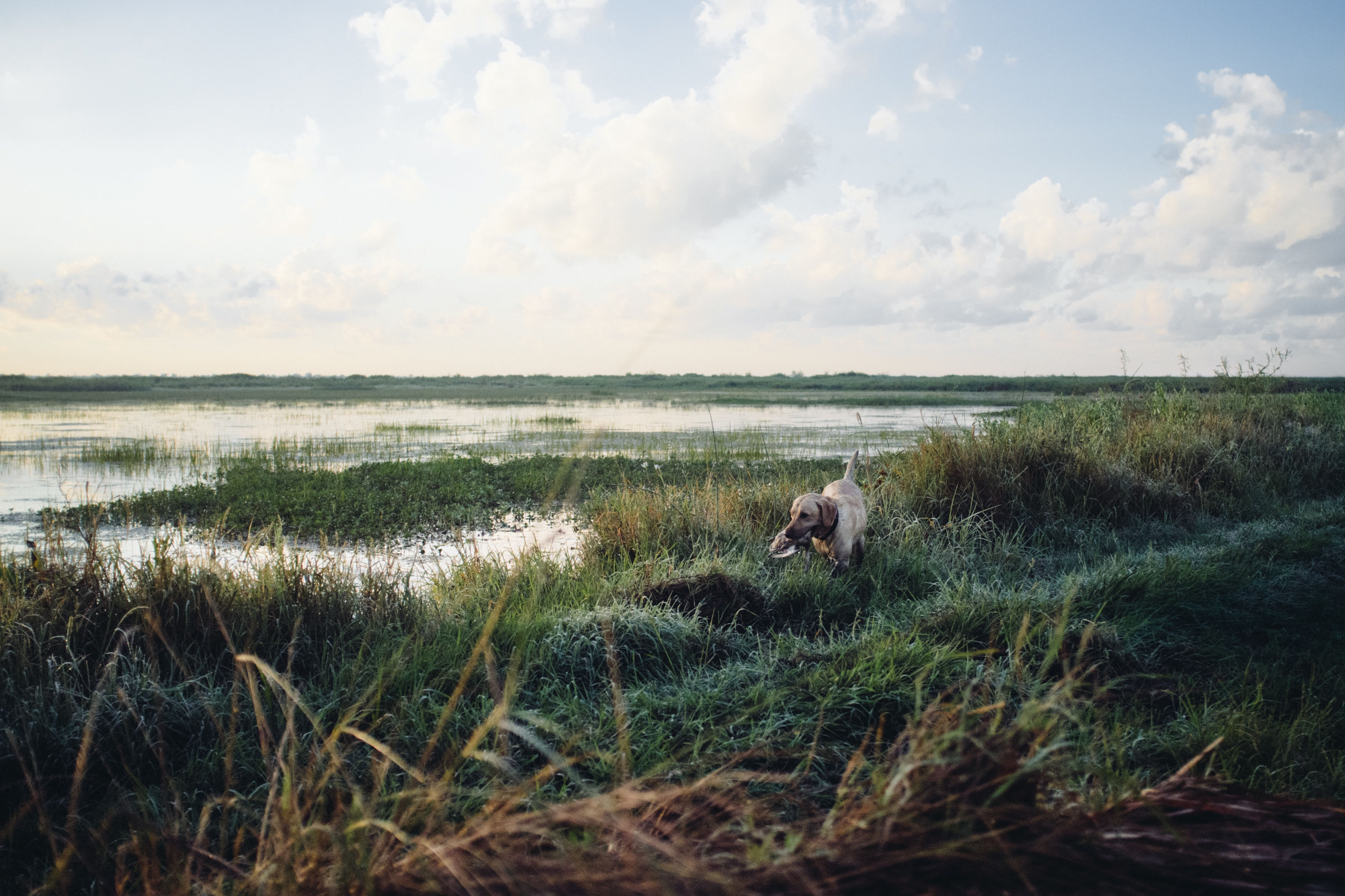
The Texas Duck-Hunting Tradition
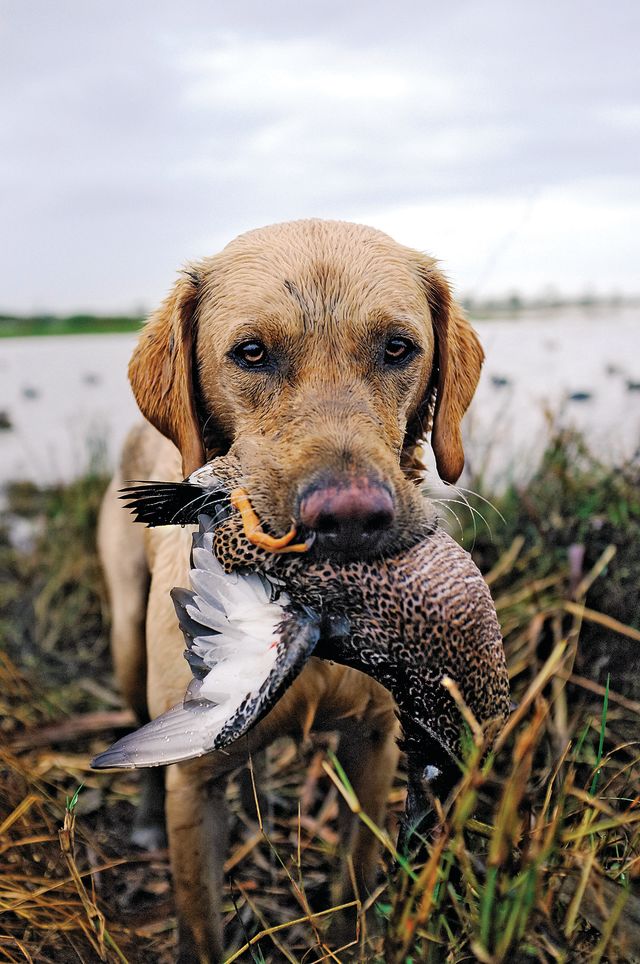
A lab returns with a blue-winged teal.
Image: John Dunaway
The labradors start barking at 3 a.m. By 4:15, the bacon is sizzling, the coffee percolating. A dozen camouflaged men arrange themselves around a kitchen table and pick at their breakfast, chatting in the predawn haze about the Astros (eliminated) and the Aggies (struggling). One caught a Black Sabbath show at Toyota Center eight hours prior. Has he even gone to bed?
Down the wood-paneled hall, I slept fitfully myself. Not because the bunk-style accommodations at Oyster Bayou Hunting Club are uncomfortable. Far from it. I was just antsy. I’ve never hunted duck before, never even held a gun. I want to experience this rich sporting culture, to understand the appeal of a pastime with deep roots in coastal Texas. But I have no clue if I’m cut out for it. Last night, I broke into a cold sweat listening to a five-minute safety demonstration—the damn shotgun wasn’t even loaded.
A few minutes before 5 a.m., Burl McBride walks into the lodge, around the fire pit and through the gear-filled garage, past the taxidermied bobcat mounted near the fireplace. He’s an imposing dude with a gigantic bald head. Gene Campbell, the club’s founder and owner, introduces him as one of his most “colorful” hunting guides; they’ve worked together for 38 years. McBride tosses me a brown nylon jacket, at least four sizes too big. I layer up and follow him into the pitch-black November morning. The ducks are in, and it is time to gun.
There are few better places to learn about duck hunting than in this corner of the state, and with a company as skilled as Oyster Bayou. At the southern end of the Central Flyway, hordes of birds migrate onto southeast Texas marshes each winter, down from Canada and the blustery western plains. The 2013 book Texas Market Hunting: Stories of Waterfowl, Game Laws, and Outlaws quotes one Houston hunter, around the time of Texas’s Independence, who recorded that it “would sound like thunder as the ducks came to roost, and we could hardly sleep for the noise they made.” And today, according to Kevin Kraai, waterfowl program leader for the Texas Parks and Wildlife Department, wetland habitats remain “very abundant and dynamic.”
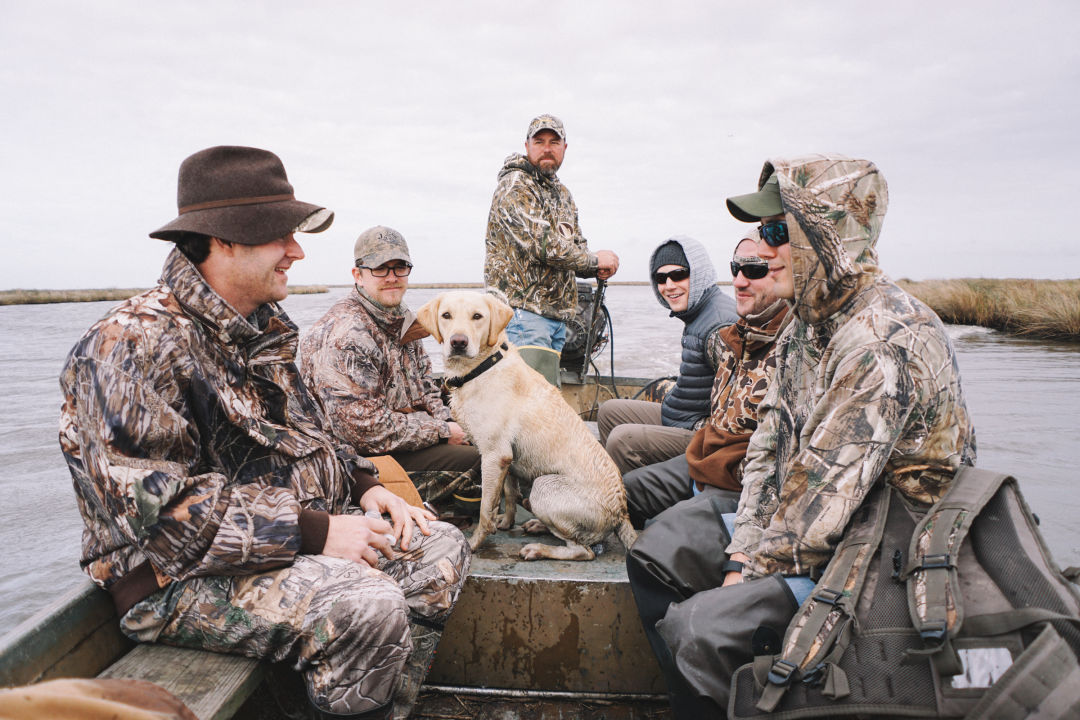
Hunting guides are like sherpas leading you to a hidden land.
Image: John Dunaway
The property near Oyster Bayou—on the edges of Trinity Bay in Anahuac, an hour’s drive from Houston—is known historically as Barrow Ranch. Here, thousands of midcentury hunters once trudged through gumbo mud and cord grass for clean shots, back before state and federal refuges offered public hunting. The entry fee was affordable; the birds plentiful. McBride can remember lines of cars stretching three-quarters of a mile from the shack entrance, before 1981, when the Barrow family sold some 15,000 acres to the U.S. Fish & Wildlife Service—as part of the Anahuac National Wildlife Refuge system—and leased the rest to professional guides, including those from Oyster Bayou.
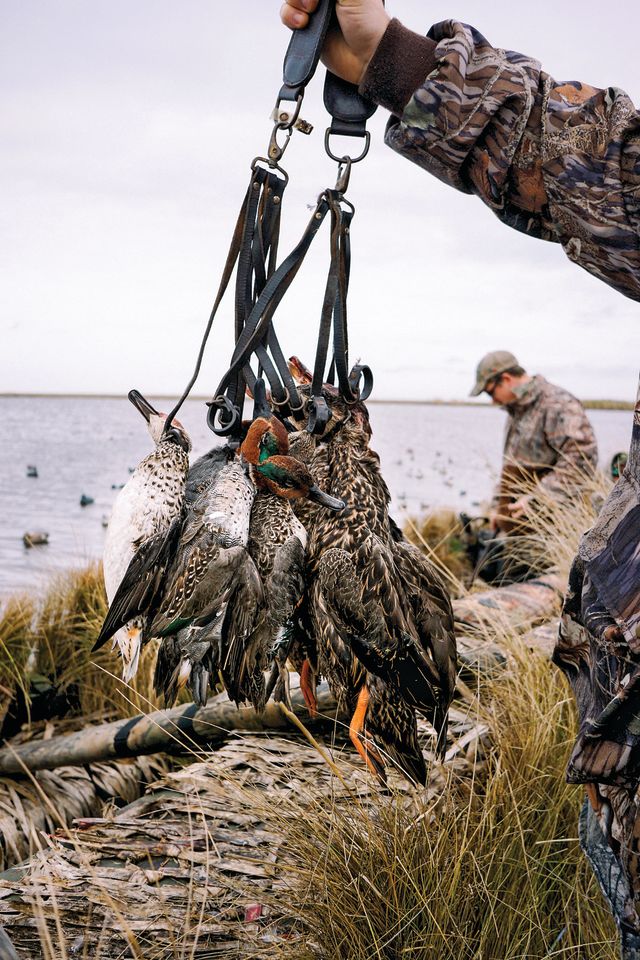
A strap of green-winged teal and shoveler ducks.
Image: John Dunaway
Campbell, 69, employs around a dozen hunters including his son, Chris, and oversees 5,800 of those Barrow acres, some of the most pristine and vibrant hunting ground the country has to offer. A laidback Baytown native and Vietnam vet who caught the hunting bug as an 8-year-old, Campbell held onto the first two shells he ever fired from a 16-gauge for years. He can still describe, in detail, his first whiff of gunpowder. “I loved everything about it,” he says, “the anticipation, the camaraderie, the relationships.”
In 1974, he quit his job as a motorcycle salesman and started guiding full-time at Barrow Ranch. Oyster Bayou now serves around 1,000 customers every hunting season, from November through January: lawyers and ship pilots and oilmen, many from Houston. Some of Campbell’s very first clients still make the trip to see him every fall. They are, in his words, “old as hell.”
Hunting at a private club like this one—$275 a day, $125 extra for meals and lodging—costs a pretty penny. But there are inherent advantages. Public plots are often crowded; the birds feel the pressure. Managing your own lease is time-consuming and carries its own risks. “The only thing that’s guaranteed,” Campbell says, “is that the pond will have water in it.” Gone are the days when you could knock on a rancher’s door, offer a fifth of something brown, and find yourself a quiet, flourishing bog.
Instead, serious hunters can outsource the heavy lifting to Campbell. He’ll sweat all summer installing the fiberglass-covered pit-blinds to shoot from. He’ll manipulate the habitat so ducks have appetizing food. He’ll even process the fowl that’s eventually bagged. (I recommend the duck gumbo, hearty and savory.) As our three-person party loads into McBride’s pick-up, he assures me that hunting here “is as easy as it gets.” I swallow hard and take his word for it.
Hunting guides are like sherpas; they lead you to hidden land, perfect for your adventure, impossible to find on your own. Our destination is Meat Pond, named for the density of fowl that frequent it. To get there takes 45 minutes and an LED flashlight. We drive six miles down the empty highway, ditch McBride’s truck for a Polaris Ranger utility vehicle, drive six more miles into the ranch, bending past doe-eyed cattle and piles of dung, before swapping out the Polaris for a tin fishing boat docked in a narrow clearing. From there, it’s 1,000 yards to the pond, through heavy reeds and around 200 elaborately painted duck decoys. Anahuac, by the way, also claims to be the “alligator capital of Texas,” I grimly remind myself as we trudge along.
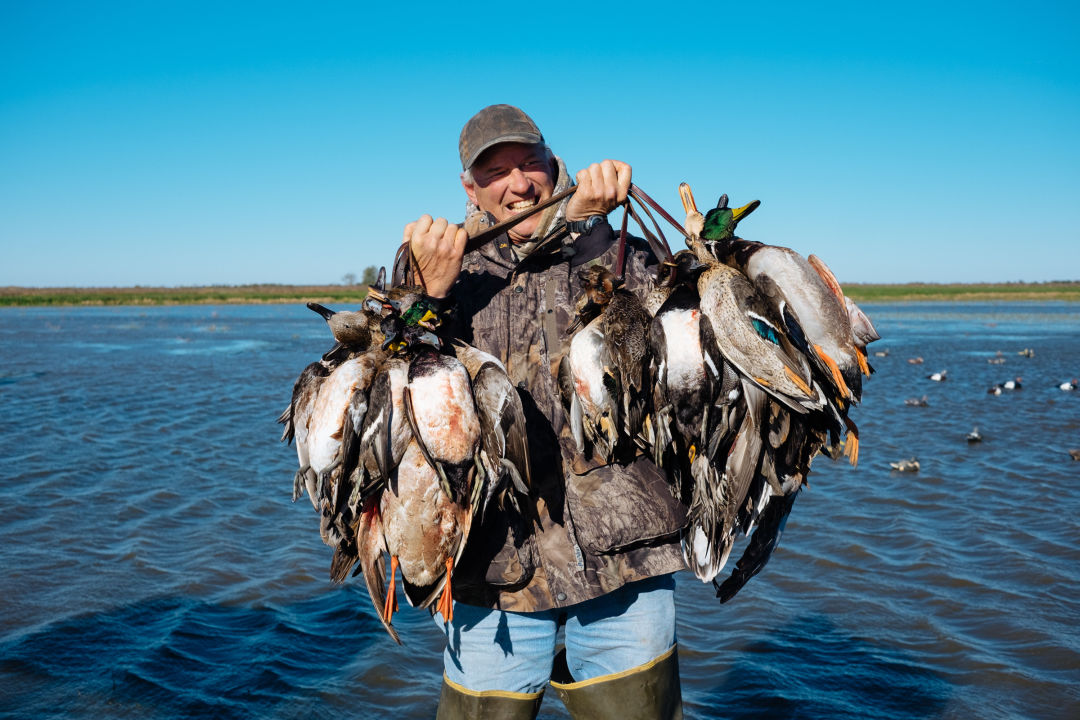
A hunter and his haul
Image: John Dunaway
Along for the trip are Troy Wood and Jay Cornelius, two other Oyster Bay guides. The colorful string of duck calls that each wears around his neck resembles ancient tribal jewelry. When we arrive at our blind, Wood flips me a can of bug spray. “We call this stuff Chambers County cologne,” McBride says. “I think this s**t just pisses ’em off.” Pink sky peeks through the clouds to the east. The air is clear and damp, the breeze light, the mosquitos relentless. Bullet, our exceptionally friendly yellow lab, whimpers at the water’s edge.
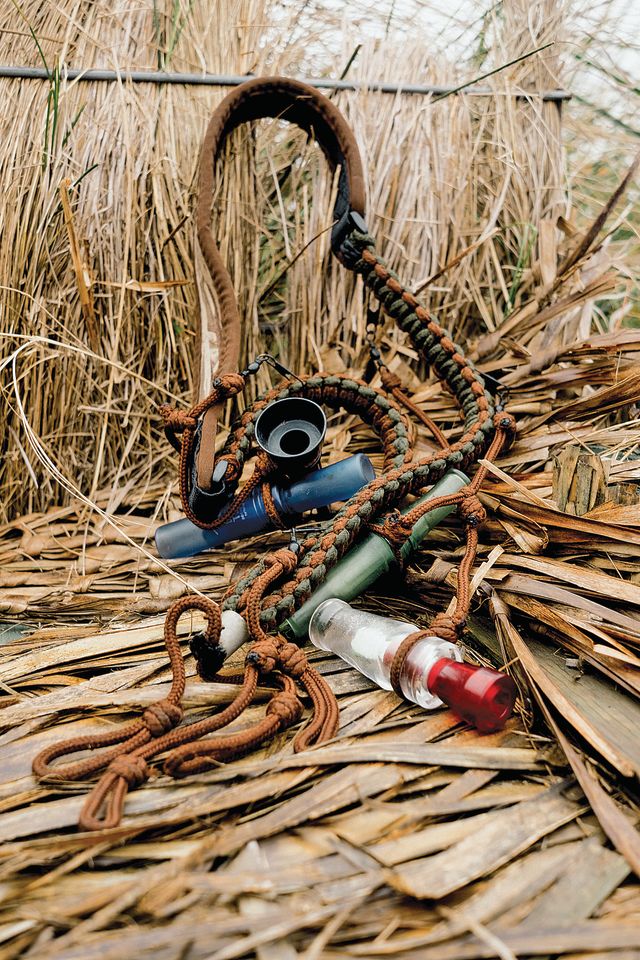
Duck calls, tools of the trade.
Image: John Dunaway
Thirty minutes before sunrise, a few teal flutter by. Some geese swoop into the nearby refuge. The guides scour the sky for subtle movement, listening for faraway chatter, hints I can’t possibly identify. If the calls are a form of seduction, the ducks are playing hard to get. Then, out of nowhere, one cuts low across the pond, all by his lonesome. Wood waits patiently and fires, sending a shell straight into the bird’s midsection. The blast is loud, hot. “That sumbitch was hauling ass!” Cornelius chirps. Bullet leaps into the water, beelines to the target, and wrangles it ashore.
The bird is mortally wounded but still flapping desperately, so McBride jams a metal instrument into its brainstem. The life seeps out. Then he hooks a little rope around its neck and hangs the bird on the panel beneath his feet. This routine, completely banal in its own way, makes me more squeamish than I’d care to acknowledge.
I decide, pretty early, that it’s in everyone’s best interest if I leave my gun on the edge of the blind. Tracking a startled migratory animal is difficult even for the most experienced marksmen, much less a jumpy amateur with clammy palms. Standing beside McBride in that confined wooden box, concealed by vegetation, I can still feel the adrenaline rush, the appealing juxtaposition of the peaceful and the violent. Duck hunting is meditative, right until it isn’t.
“The good duck hunters, they can’t even think about anything else,” Campbell told me last night. “These guides I’ve got, it’s all they can think about, all day long.”
An hour later, Wood spots the best wave of the day, a pack flying south in formation, from our 12 to our 6. They pump and glide, inching closer, suspecting nothing, cutting through the pale blue. Over the pond, the guides take aim and pick off five before I can even blink. Their limp bodies fall from the sky like downed fighter jets. The rest, flustered, scatter in various directions. Nobody celebrates; Wood merely turns and tells his pals that round of fire “felt better.” He reloads, squats back down in the blind, and searches for more.
Though Oyster Bayou’s regulars might not admit it, their sport is approaching an existential crossroads. There are diehards out there hunting, and plenty of waterfowl to shoot. Around the Texas coast, the seasons are historically long, the bag limits high. Still, participation levels are down nationally, in some places significantly. Compared to Texas’s expanding population, the proportion of people who hunt here is shrinking steadily. “It’s not one of those sports you just pick up and go do,” says Kraai, from the wildlife department.
Habitat protection is also a concern. The climate is warming, and unchecked development threatens to eat up appealing wetlands. Wildlife officials and conservation groups like Ducks Unlimited are doing all they can to preserve the region’s natural landscape, but funding and political will are finite resources. If our water starts to dry up, ducks will necessarily seek it out elsewhere.
After decades of manual labor, Campbell is slowing down himself. He had a hip replaced in September, and he’s scheduled for cataract surgery later this month. The gout in his foot bothers him most of all. His son wants to take over the club eventually, and some of the other guides are interested in equity, too. Pulling their boss out from his waders, though, will be easier said than done.
“Every time you pack up or take a leak, a bird comes in and lands on the decoys,” Cornelius tells me. “It never fails.” We’ve waited an hour for one last shot. The clouds thin out overhead. Nothing’s doing. So McBride, 12 birds in hand, leads our crew back to the lodge, from boat to utility vehicle to pick-up. And sure enough, just as he turns the ignition to speed down the dirt path, five gorgeous mallards streak right in front of us, heading directly for Meat Pond.
McBride pumps the brakes and cranes his neck upward, staring at his missed opportunity. Bullet yelps from the truck bed. Then McBride glances at me, with a philosophical look in his eyes. “Well, you take what comes,” he says. “That’s why they call it hunting, not killing.”
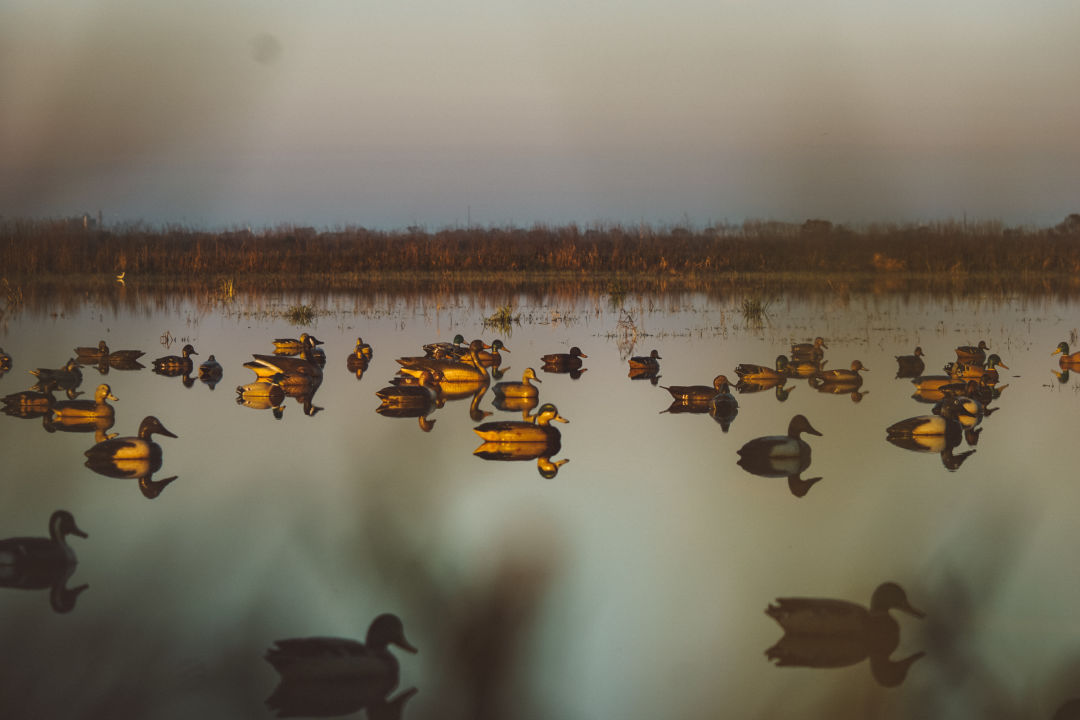
Decoy ducks wait on still waters for the next flock to come.
Image: John Dunaway



